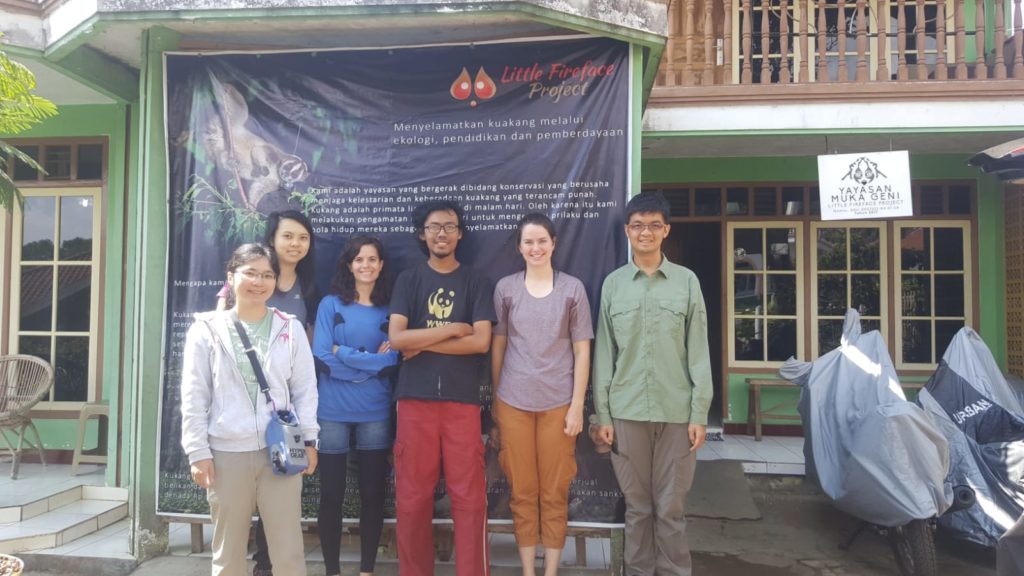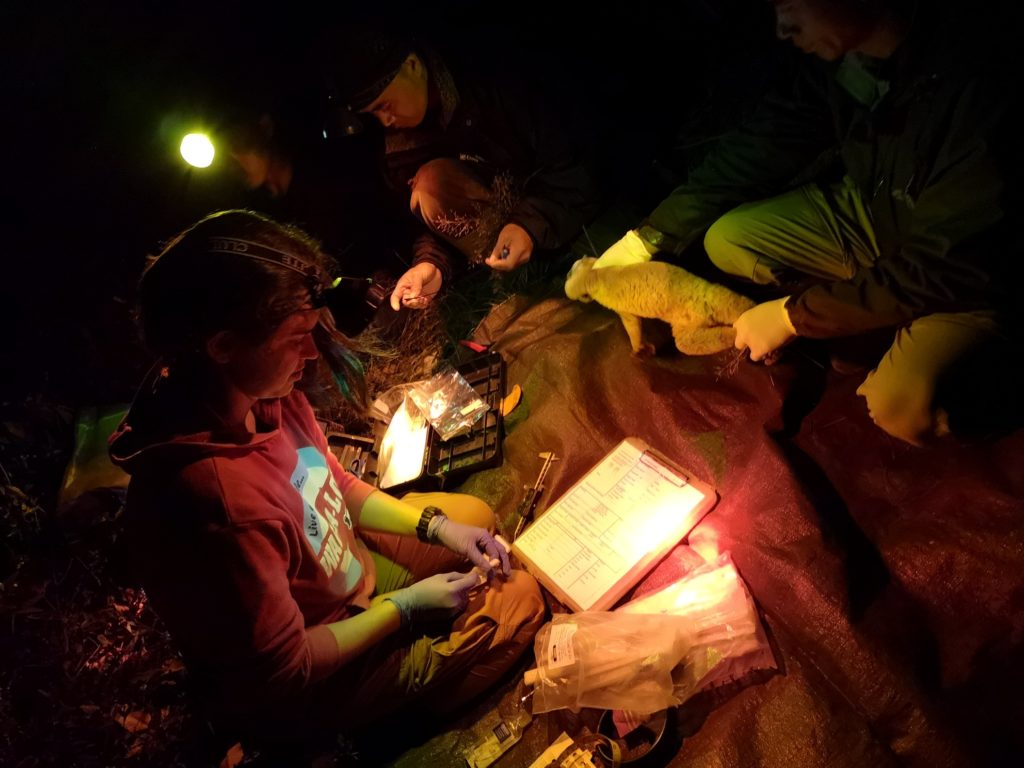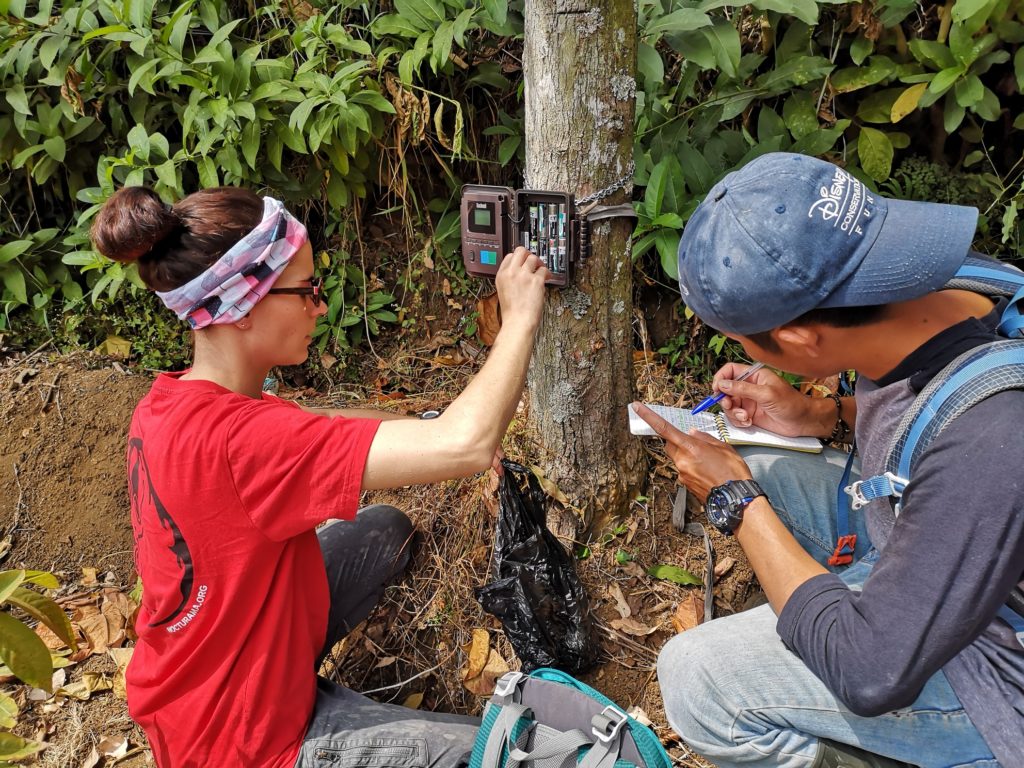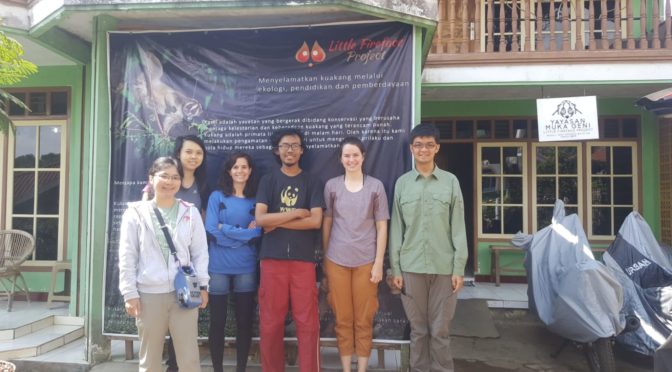Bing Wen and I from the National Biodiversity Centre, together with Yuet Hsin from the Conservation division of National Parks Board (NParks), Singapore attended a 5-day study trip to Cipaganti from 27-31 Aug 2018 hosted by the Little Fireface Project. It was an amazing and fulfilling trip as we learned a lot about the conservation efforts of the Javan Slow Loris in Indonesia. The Sunda Slow Loris (Nycticebus coucang) is one of the species identified for NParks’ Species Recovery Programme and very little is known about the ecology of this nationally threatened primate because of its nocturnal and cryptic nature. The team has been doing regular population surveys of this species in Singapore’s nature reserves and buffer parks since 2017 using the spotlighting method and very few lorises have been sighted thus far.

Moving forward, we are exploring the feasibility of tracking individual lorises through GPS collars to understand their movement patterns and home range sizes. The Little Fireface Project runs the only long-term radio-tracking study of wild slow lorises in Asia and we hope that through this study trip, we can acquire important skills on radio-tracking of lorises, as well as in-depth knowledge on loris ecology and behaviour.
Day 1: Arrival
The field station was based in a cosy Indonesian-styled house with a balcony overlooking the beautiful Cipaganti village. Upon arrival, we were warmly welcomed by researchers Ella and Hélène who gave us an overview of the LFP programme. The population density of Javan lorises is high around Cipaganti’s kebuns (gardens, mostly Labu or sweet gourd trellises on bamboo frames) and the lorises typically use bamboos as sleeping sites. Their diet consists of insects, gum and nectar from local plants and some lorises are radio-collared for long-term monitoring projects. Collars have a lifespan of one year and need to be checked every 6 months to adjust for tightness from loris growth and change in reproduction status.
Day 2: Slow Loris Capture
On day 2, we were blessed with the opportunity to participate in a capture survey of a collared Javan loris “Fernando”. The team of researchers, volunteers and local trackers set off at dusk to locate the sleep site of “Fernando”, about 30 minutes away from the field station. Upon detection of radio signals from the sleeping loris, all lights were off in anticipation. When darkness fell and the loris showed signs of activity, the team sprang into action. Local trackers trained in handling of lorises captured “Fernando” directly from its sleeping tree when it descended to a suitable height while the rest set up the field site.
Morphometries such as body length, head width and weight were measured along with collection of hair and saliva samples. Collar checked were completed within 20 minutes of capture and no sedation was used in the process. At the end of the survey, “Fernando” was released back to the same tree.

Day 3: Slow Loris Monitoring
On day 3, we attended a routine observation survey which takes two consecutive 6-hr shifts to complete. The first shift began at 5pm shortly before sunset when the team set out to track the focal loris for the night. Upon locating the target loris, the team waited in darkness for it to wake up, careful not to disturb its biological cycle. When signs of activity are detected, observations were recorded every five minutes by the lead researcher, while the tracker recorded GPS coordinates for every 10 meters moved. Observations taken include social behaviours, vocalisation, locomotion, substrate, food items and feeding techniques. Observers were at least ten metres away from the loris at any time and radio tracking was only used to determine loris proximity when the animal was out of view. At about 11pm, the team for shift 2 took over to continue the second part of the observation survey.

Camera traps were also deployed in plantations to study the impact of habitat fragmentation on small carnivores and to monitor social interactions. During the day, researchers performed routine maintenance of the camera traps and checking of loris sleeping sites. Local village children also drop by the field station (locally known as Rumah Hijau, or Green House) daily after school to learn basic English and are always eager to interact with foreign visitors like us.
What We Gained
Although our time in Cipaganti was short, we gained immense knowledge on the behaviour, ecology of lorises, and most importantly, field techniques to boost the efficiency of our future loris surveys. We also learnt the importance of radio-collaring lorises to understand their movement patterns and home ranges, which are crucial in determining priority zones for improving habitat connectivity. What struck us most was the dedication and passion of the researchers, volunteers, and local community on conserving the Javan loris, which is the key to the success of the LFP project. We are deeply grateful to LFP for hosting us and letting us participate in the loris surveys. The skills and knowledge we acquired in this trip will go a long way in the conservation of Sunda slow loris in Singapore. Thank you Little Fireface Project!
Li Tianjiao
Low Bing Wen
Toh Yuet Hsin

